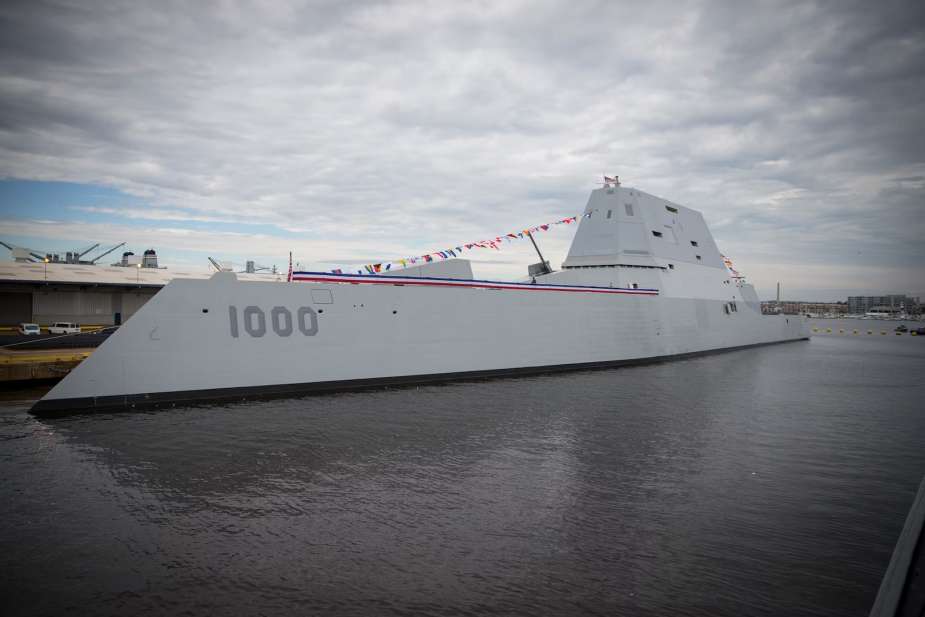Breaking news
HII wins contract to install hypersonic missiles on USS Zumwalt.
According to information published by HII on August 29, 2023, Ingalls Shipbuilding division announced a significant $154.8 million contract to undertake the modernization efforts for the USS Zumwalt (DDG 1000).
Follow Navy Recognition on Google News at this link
 US Navy's Zumwalt class destroyer USS Zumwalt. (Picture source: PACOM)
US Navy's Zumwalt class destroyer USS Zumwalt. (Picture source: PACOM)
Arriving in Pascagoula on Aug. 19 after departing from San Diego, the USS Zumwalt is poised to undergo an extensive upgrade. This will ensure it continues to be a formidable vessel in the U.S. Navy, integrating state-of-the-art technology such as the Conventional Prompt Strike (CPS) weapon system.
Earlier in January 2023, Ingalls had already marked its stamp on the industry by clinching a $10.5 million contract. This was specifically for the planning phase of modernizing Zumwalt-class guided missile destroyers, which includes both the USS Zumwalt (DDG 1000) and the USS Michael Monsoor (DDG 1001).
The latter will also see the CPS system being installed during its upcoming modernization phase. Adding to this fleet, the Lyndon B. Johnson (DDG 1002) has been at Ingalls since January 2022 and is presently engaged in a combat systems activation.
The Zumwalt-class destroyers are equipped with modern electric propulsion systems, a wave-piercing tumblehome hull, and a stealth design. Along with their advanced technology and armaments, they are designed for a variety of naval missions, ranging from deterrence and power projection to sea control.
Hypersonic weapons
Contrastingly, the maritime defense landscape is also being redefined by Russia and China, each introducing their naval hypersonic missiles.
Russia's 3M22 Zircon, also known as Tsirkon, is one of the most talked-about additions to their naval arsenal. This missile is reportedly capable of reaching speeds between Mach 8-9, making it a considerable threat to both naval and ground assets.
The Zircon's unpredictability in its flight path, combined with its high speed, is believed to challenge even the most modern missile defense systems. The missile's range, extending approximately 1,000 km, combined with its capability of having both conventional and nuclear warheads, further highlights its potential potency on the maritime battlefield.
On the other side, China's YJ-21 is part of their strategic blueprint to bolster their naval might, especially in the context of the Indo-Pacific region. While specific details about the YJ-21's capabilities remain less transparent, the fact that it is touted as a hypersonic missile suggests China's intention to parallel or even exceed current global missile standards.


























